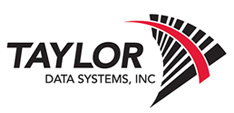BLOG
RFID in Manufacturing: What You Should Know
Radio frequency identification (RFID) is an automated data capture and locationing technology that’s been around for three decades now. But it’s begun to make its biggest impact over the past five years and it’s gaining popularity in new use cases in industries such as manufacturing.
RFID is helping many manufacturers streamline workflows, replace paper-based and manual processes, automate data capture and operational management, and convert labor-intensive tasks into more efficient processes.
It’s a transformative technology that has many potential applications, but the first step to understanding its potential is to find out how it works and how it’s being used in real world manufacturing applications.
How RFID Works
RFID is similar to Wi-Fi in that it relies on wireless radio signals to transmit data. With RFID, a tag or label is printed and encoded with a unique identifier, and it contains tiny micro-transmitters that can transmit radio waves and data wirelessly.
An RFID reader reads and identifies this tag or label wirelessly and remotely. If you’re using a passive RFID tag, the tag “wakes up” when it receives a signal and wireless energy from an RFID reader—and then it transmits its unique identifier. Active RFID tags have their own power source and periodically wake themselves up and send the same data.
An RFID reader is able to read RFID tags or labels within a certain range, depending on the products being tagged, the type of tag and RFID technology you’re using. But the big advantage is that there’s no need to line up a scanner with a barcode or have line-of-sight access to a label, and you can read large volumes of tags or labels in seconds.
For example, you can read an entire pallet of goods in a matter of seconds, or you can read an entire room’s worth of RFID tags in minutes, without having direct visibility or physical access to a barcode label.
Many companies deploy fixed reader RFID systems with readers placed in strategic locations where they read tags and labels automatically as assets, inventory and other items as they move into, through or out of a given area.
In these use cases, fixed RFID readers are combined with RFID antennas and software to read, collect, transmit and update tag and label data and locations. Each item’s unique ID is matched up with a database or other system where all this related information is stored and updated.
How Plants and Warehouses Are Using RFID to Automate Processes
Since RFID allows virtually any part, material, asset or person to be identified, tracked and located automatically and without the limitations of traditional barcoding technology, it has gained wide popularity in manufacturing and warehouse environments.
Thanks to its many benefits, RFID has been used for years in:
- Inventory management
- Asset management
- Work-in-process tracking
- Traceability
- Quality assurance
- And many other applications
In inventory management, manufacturers and warehouses use RFID to replace labor-intensive manual barcode scanning and time-consuming cycle counts with a completely automated system. They can identify, locate and track inventory with minimal to zero human labor depending on the type of RFID technology they use, so they always have a real-time and accurate picture of their inventory, replenishment needs, receiving and put-away, and shipments.
In manufacturing, RFID is often used for complete traceability of inventory, parts, and components, so they can be tracked automatically from the receiving dock all the way through production processes and finished goods. By being able to identify and locate items remotely and with less labor, manufacturers are able to streamline production processes for better accuracy and efficiency.
Many manufacturers also use RFID to automate asset tracking, so production equipment and tools can be located and retrieved quickly without human labor and manual searches.
It can also be used for work-in-process tracking to validate that the correct parts and inventory, have arrived at each stage of the production process. Additionally, RFID can be used to detect potential problems before they occur by creating exception alerts.
RFID is regularly used in quality assurance as well. In these applications, RFID is used to tag, locate, and track parts and finished goods for quarantine, inspection and quality control.
And, ultimately, by helping gather data from the edge of operations, quickly and accurately, RFID delivers better operational visibility, allowing managers and other decision-makers to see the location and status of mission-critical assets, inventory, people and processes in real time.
Recommended RFID Hardware and Tags
At Taylor Data Systems, we’ve been helping our customers design and deploy RFID systems for years, and we’ve learned a lot about the importance of using the right hardware and tags.
That’s why our RFID experts strongly recommend Zebra RFID solutions because of Zebra’s unrelenting focus on quality, performance and long-term affordability.
Zebra offers an entire portfolio of RFID solutions to build and customize systems for virtually any application. Here’s a quick overview of some of the top solutions we recommend:
MC3300xR Mobile Computer
A UHF RFID reader and rugged industrial mobile computer to run your business apps
FX9600 Fixed RFID Reader
Top-of-the line fixed RFID reading performance for high-volume, rugged environments
DS9900 RFID/Barcode Reader
Hybrid barcode and RFID reader for seamless data capture and tracking
ZT411 Industrial RFID Printer
Fast, reliable and ultra-durable RFID label and tag printing
Zebra RFID Antennas
High-throughput, high-capacity communications for fixed RFID readers
Zebra RFID Labels, Tags and Supplies
Stock RFID labels and tags to meet any application or budget, including specialized tags for wireless transmission through liquids and for use on metals
Exploring RFID for Your Business
RFID is a proven technology with numerous potential applications and benefits in manufacturing. But every company should assess RFID in the context of its own business and processes, to determine if there is an appropriate fit.
To learn more about RFID and to explore the possibilities for your business, contact our experts at Taylor Data Systems now. We’ll help you review your business needs and goals, determine if RFID is right for you, and provide guidance to help you design and implement the right system.







